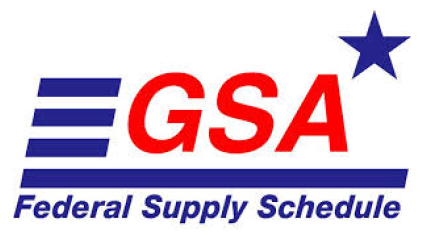The world of government contracting is vast and intricate, with General Services Administration (GSA) contracts playing a pivotal role for many businesses. If you find yourself nearing the end of your GSA contract’s last option year, there are crucial considerations that could significantly impact your future opportunities. In this article, we’ll delve into the potential risks and offer a strategic solution that can open doors to new business ventures.

Risk of Losing Opportunities
As a GSA Contract Holder, the last option year is a critical juncture. Failure to renew your contract could mean missing out on valuable opportunities to compete for Blanket Purchase Agreements (BPAs) or other multi-year contracts. The expiration date of the original GSA contract serves as a strict deadline for any subsequent contracts or orders.
To comprehend the significance of the last option year, it’s essential to grasp the concept of option years within GSA contracts. These are additional periods beyond the initial contract term, providing flexibility for contract performance extension.
Overcoming Expiration Challenges
The solution to the challenges posed by contract expiration lies in the concept of overlapping contracts. Imagine having two Multiple Award Schedule (MAS) contracts concurrently, each with different periods of performance. This overlapping strategy can be a game-changer for GSA contractors.
Initiating the overlapping process involves canceling the existing contract upon awarding the new one. However, an intriguing aspect is that if a contractor holds active BPAs or orders under the current contract, or has submitted quotes awaiting a decision, they qualify for the award of a new contract that can overlap with the existing one.
Active BPAs and Orders
The key to eligibility for overlapping contracts lies in having active BPAs or orders. This opens the door to obtaining a new contract that runs in parallel with the existing one, allowing seamless continuity in project execution.
Practically, managing two contracts simultaneously may seem challenging, but it offers a unique advantage. Contractors can complete ongoing work under BPAs and orders awarded through the existing contract while using the new contract to explore and secure additional business.
Benefits of Overlapping Contracts
The benefits are twofold. GSA contractors can maximize their contract performance by finishing existing projects and, at the same time, pursue new opportunities without any disruption. This dual-contract strategy creates a dynamic and versatile approach to government contracting.
Considerations for Contractors
Before diving into overlapping contracts, it’s crucial for contractors to evaluate various factors. Assessing the feasibility, benefits, and potential challenges ensures a well-informed decision that aligns with the contractor’s objectives and capabilities.
Avoiding Common Pitfalls
While overlapping contracts offer numerous advantages, it’s essential to be aware of potential pitfalls. Contractors should strategize to mitigate risks effectively, ensuring the success of both contracts without compromising performance or compliance.
Success Stories
Real-world success stories underline the effectiveness of overlapping contracts. These examples showcase how GSA contractors have leveraged this strategy to enhance their business prospects and navigate the complexities of government contracting successfully.
Adherence to GSA regulations is paramount. Contractors must navigate the legal aspects of overlapping contracts carefully, ensuring compliance and avoiding any pitfalls that may arise from misunderstandings or oversight.
Strategic Planning for GSA Contractors
In the ever-evolving landscape of government contracting, strategic planning is key. GSA contractors must develop a thoughtful and forward-looking approach to contract management, ensuring long-term success and sustained growth.
To stay ahead in the GSA contracting arena, contractors need to be aware of current industry trends and updates. This knowledge equips them to adapt to changes, seize emerging opportunities, and position themselves as leaders in their respective fields.
Conclusion
Approaching the last option year on a GSA contract is a critical moment for contractors. The strategy of overlapping contracts provides a powerful tool to navigate this juncture successfully. By actively managing both contracts, GSA contractors can ensure the completion of existing projects while pursuing new business ventures, creating a pathway to sustained success in the complex world of government contracting.
Master the art of overlapping GSA contracts for sustained success in government contracting. Seize opportunities, manage challenges, and stay compliant. Ready to elevate your strategy? Connect with us!
Frequently Asked Questions
Q: Can overlapping contracts be applied to any type of GSA contract?
- A: Yes, overlapping contracts can be considered for various GSA contracts, provided the contractor meets the eligibility criteria.
Q: What challenges might contractors face when managing two contracts simultaneously?
- A: While the benefits are substantial, challenges may include resource allocation, compliance management, and coordination between two contracts.
Q: How long does it typically take to process and award a new overlapping contract?
- A: The timeline can vary, but contractors should be prepared for a thorough evaluation process before the new contract is awarded.
Q: Are there specific industries or sectors where overlapping contracts are more common?
- A: Overlapping contracts can be beneficial in various industries, and their applicability depends on the nature of the projects and contracts involved.
Q: What steps can contractors take to ensure compliance with GSA regulations during the overlapping period?
- A: Contractors should stay informed about GSA regulations, seek legal advice if needed, and establish robust compliance management processes to navigate overlapping contracts successfully.




